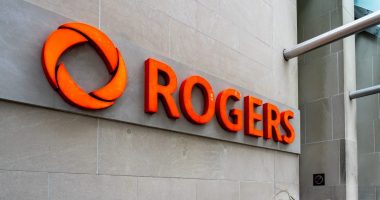- Claritas Pharmaceuticals (formerly Kalytera Therapeutics) will focus on development of R-107
- R-107 is a nitric oxide-releasing compound
- Nitric Oxide is a naturally occurring molecule with antiviral properties against multiple viruses, including RNA viruses
- The SARS-CoV-2 virus is an RNA virus
- Unlike nitric oxide gas, which must be administered as an inhalation therapy, R-107 is a liquid that can be administered orally, nasally or via injection
- R-107 is expected to allow treatment without the need for special delivery equipment or trained respiratory therapists
- Claritas Pharmaceuticals, Inc. is a clinical stage biopharmaceutical company
- Claritas opened trading at C$0.65 per share
Claritas Pharmaceuticals (KLY) will focus primarily on the development of its nitric oxide-releasing compound, R-107.
R-107 is a nitric oxide-releasing compound. Following administration orally in a capsule, or by nasal spray, or by injection, R-107 enters the bloodstream, where it slowly releases nitric oxide systemically over 24 hours.
Nitric oxide is a natural molecule with antiviral properties that is produced by the body itself. It is an integral part of the body’s natural defense system.
When a viral threat is present, white blood cells migrate to the area of infection and release a burst of nitric oxide that crosses into the infected cell and inactivates the virus, so that it is incapable of further replication and spread.
Nitric oxide is known to have a broad antiviral activity against multiple viruses, including so-called “RNA viruses”.
The SARS-CoV-2 virus, which is responsible for COVID-19 infection, is an RNA virus.
Other RNA viruses of importance that cause human disease include influenza, SARS, the common cold, hepatitis C, hepatitis E, West Nile fever, rabies, and measles.
Vancouver-based SaNOtize Research and Development Corporation recently confirmed that nitric oxide administered through use of their proprietary delivery technology inactivated more than 99.9% of SARS-CoV-2 virus within two minutes.
Nitric oxide that exists as a gas must be delivered by inhalation therapy requiring use of a CPAP-like device and administration by trained respiratory therapists. For these reasons, use of nitric oxide gas use is expensive, complex, and cumbersome, and therefore its application has been quite limited.
R-107, on the other hand, is a breakthrough compound designed to overcome the limitations of nitric oxide inhalation therapy.
Unlike nitric oxide gas, which must be administered as an inhalation therapy, R-107 is a liquid that may be readily administered orally in a capsule, or nasally though use of a nasal spray, or by a single intramuscular or subcutaneous injection.
Due to its ease of administration, R-107 is expected to allow treatment without the need for special delivery equipment or trained respiratory therapists.
When R-107 is administered by either the oral, or nasal or injectable route, R-107 enters the bloodstream, where it is stable and can slowly release nitric oxide systemically over 24 hours. R-107’s systemic release of nitric oxide facilitating the elimination of virus in all organs and tissues.
R-107 is poised to become a more effective, less expensive, and more easily administered form of nitric oxide that could potentially transform this agent into a frontline therapy against COVID-19 and other viral infections.
“R-107 will play an important role in the fight against COVID-19, and vaccine-resistant variants of the COVID-19 virus. We intend to become a leader in the race to find a treatment for COVID-19, and we are well positioned to achieve this goal,” stated Robert Farrell, President and CEO of Claritas.
“However, our goal is more ambitious than that: we intend to develop R-107 as a broad-spectrum antiviral drug for the treatment of, and possible prevention of, future viral outbreaks. We are working closely with the Salzman Group to develop R-107 to treat, and possibly prevent, COVID-19 infection, as well as influenza and common colds caused by adenovirus, coronavirus and influenza virus.”
Mr. Farrell continued, “Nitric oxide has generally demonstrated the ability to inhibit viral replication of RNA viruses, and there is an extensive body of in vitro and in vivo data demonstrating the ability of nitric oxide to prevent the replication and transmissions of several of these viruses. Based on these data, we intend to develop our proprietary R-107 technology as a therapy for COVID-19 infection, as well as a therapy for other RNA viruses, including the influenza virus.”
Professor Salvatore Cuzzocrea, President of the University of Messina and former President of the European Shock Society, is working with Salzman Group and Claritas, and has read and approved of the scientific disclosure in this news release.
Professor Cuzzocrea has deep expertise regarding the medical use of nitric oxide and nitric oxide donors, and has published more than 600 papers on inflammation and nitric oxide. He has conducted research and experiments with nitric oxide and nitric oxide donors since 1994, and worked closely as an advisor with the Salzman Group team that designed and invented R-107.
Claritas Pharmaceuticals, Inc. is a clinical stage biopharmaceutical company.
Claritas opened trading at C$0.65 per share.





